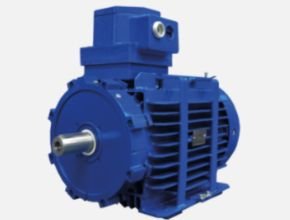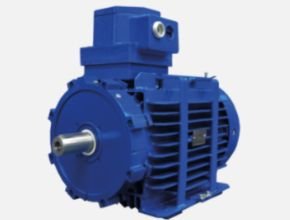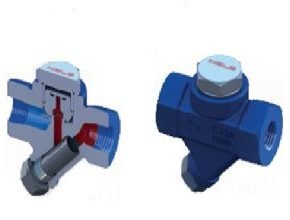What Is Oil & Gas?
Oil and gas production is the general process of manufacturing oil and natural gas from wells and turning them into the final petroleum products that consumers can use. Oil and gas production includes systematic steps starting from the site exploration, to actual extraction, and even up to the distribution of the products to businesses and the general public.
The oil and gas industry is one of the largest sectors in the world and a huge factor in the global economy. But just like any other industry, it can also be very fragile and prone to volatility. With all the things recently happening between two major oil producers, there’s a call to ramp up oil and gas production to avoid shortages and prevent the prices from increasing further.
History of the Modern Oil Industry
Throughout human history, before the modern history of the oil and gas industry even began, energy has been a key enabler of living standards. To survive in the agrarian era, people burned wood for warmth and cooking. In addition to its use as a building material, wood remained the chief global fuel for centuries. The invention of the first modern steam engine, at the beginning of the 18th century, heralded the transformation from an agrarian to an industrial economy.
Steam engines could be powered by either wood or coal, but coal quickly became the preferred fuel and it enabled massive growth in the scale of industrialization. A half-ton of coal produced four times as much energy as the same amount of wood and was cheaper to produce and, despite its bulk, easier to distribute. Coal-fired steam locomotives dramatically reduced the time and cost of inland transportation, while steamships traversed oceans. Machines powered by coal enabled breakthroughs in productivity while reducing physical toil.
With the dawn of the 20th century, environmental concerns and new technologies led to another energy source shift from coal to oil. Interestingly, although women were not yet allowed to vote, ladies’ societies in the United States were instrumental in lobbying for laws to improve air quality and reduce the dense smoke caused by burning coal.
Process of Oil and Gas Production
The process of oil and gas production is divided into three major stages namely upstream, midstream, and downstream. Each stage is regulated and laws can vary per locality or state. There are also international agreements that have to be observed and complied with. Learn more about the stages of oil and gas production in the following:
Stage 1:
- Upstream
- Upstream refers to the primary process of oil and gas production that includes exploration, drilling, and extraction.
- Exploration
- This is the initial part where geologists and other industry experts search for rock formations or areas where oil and gas are commonly found. After a site is selected, it will be prepared and developed for the actual production process.
- Drilling
- The well drilling process and timeline can vary depending on the techniques and equipment used in the procedure. Normally, it takes about two to four weeks, but drilling an offshore well can last for several months.
- Oil and gas are commonly drilled vertically but using newer technologies offers various advantages such as time-saving opportunities, lesser operating costs, and reduced negative environmental impact. New drilling techniques include horizontal drilling, multilateral drilling, extended-reach drilling, and complex path drilling.
- Extraction
- Oil and gas extraction generally includes the actual process of extracting conventional oil and natural gas from underground reservoirs and wells. This is also the step where fracking and recycling of fracking fluid is done.
Stage 2:
- Midstream
- As the secondary stage, midstream mostly refers to the processing, storing, and transportation of oil and gas products.
- Processing
- This is the midstream stage where oil and natural gas are separated and then transferred to the gas processing plants where unnecessary products and nonhydrocarbon gases are removed.
- Storing
- Proper storage of the products is essential to keep up with the domestic and international demand, prevent shortages and discrepancies in supply, and ensure safety for all the workers and people involved in the industry.
- Natural gases are usually stored in underground spaces such as depleted reservoirs, while finished oil products, crude oil, and refined oil commonly use above-ground tanks as storage.
- Transportation
- Transportation is an all-encompassing process for the industry. It starts when oil and gas are extracted and brought to the processing plants, transferred to companies and businesses across the nation and to other countries, and finally to the general public or primary consumers. Unrefined oil is transported via tankers and pipelines, while final petroleum products travel to the market through trucks, railroad cars, tankers, and more pipelines.
Stage 3:
- Downstream
- Downstream refers to the third stage and final process of refining and distribution of petroleum products.
- Refining
- Refining is the process of converting oil and natural gas into finished petroleum products that can be used for various reasons such as transportation and electricity fuels, asphalt and road oils, kerosene, or as raw materials for making plastic and synthetic materials.
- Oil refining also involves several processes depending on the desired end product. This process commonly includes the units of distillation, cracking, coking, reforming, and post-treatment.
- Distribution
- As the name suggests, distribution is the final step where the finished petroleum products are transported and distributed to businesses, government agencies, and the general public composed of industrial consumers, electrical providers, and heating of residential and commercial establishments, among others.
Production Equipment
Oil and gas production is complex and involves multiple processes that are further broken down into smaller steps. This industry also comprises various businesses that have their roles to play in the stages of upstream, midstream, and downstream. Significant of oil number and gas production equipment is used to ensure an efficient procedure from start to end. Some of the primary industry equipment and assets include:
- Tank vessels – storage tanks and gas condensers
- Heat exchangers – shell and tube, plate, regenerative, and adiabatic wheel heat exchangers
- Evaporators – natural/forced circulation, rising/falling film, climbing and a falling-film plate, multiple-effect, and agitated thin film evaporators
- Tank vessels – storage tanks and gas condensers
- Heat exchangers – shell and tube, plate, regenerative, and adiabatic wheel heat exchangers
- Evaporators – natural/forced circulation, rising/falling film, climbing and a falling-film plate, multiple-effect, and agitated thin film evaporators
- Air coolers
- Towers
- Steel pipes
- Geophysical prospecting equipment
- Drilling and production equipment
- Refinery and chemical equipment
- Logging equipment
- Offshore engineering equipment

Technical Features
- SERIES: B_E
- POWER: Up to 315 kW
- VOLTAGE: Up to 690 V
- ATEX EXECUTION: Ex tb IB/IC T135°C Db IP65
- FRAME: 80 to 355
- POLE: 2 to 8
- FREQUENCY: 50 Hz, 60 Hz, or variable speed
- PROTECTION DEGREE (IP): 55, 56, 65, 66
- COOLING METHOD (IC): 411, 416
- AMBIENT TEMPERATURE: -55°C to +60°C
- ENCLOSURE MATERIAL: Cast iron
- BEARING: antifriction, sleeve
APPLICATIONS
- Centrifugal & reciprocating compressors, Conveyor systems, Cranes, Extruders and expanders, Heat exchangers and blowers, Mills, Mixers, Pumps
- STANDARD / CERTIFICATE: IEC 60034, 60079
Main Options:
- PT100 in stator windings
- Anti-condensation heaters
- Special voltage
- Arrangement for vibration sensors
- Horizontal or vertical shaft design
Source: www.marellimotori.com
Read More Articles:





